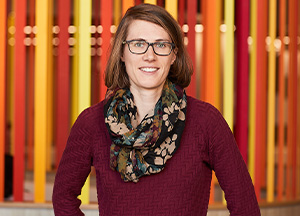
Dr Peggy Schoenherr, Research Fellow, UNSW
Here, we investigate the thickness-dependent mechanical and electrical switching behaviour of ferroelectric domains in PbZr0.48Ti0.52O3 thin films on YBa2Cu3O7-δ. By using the pressure of an atomic-force-microscope cantilever, we found that the films switch at pressures down to roughly 0.2 GPa. Interestingly, the mechanical poling is found to work analogous to an applied positive bias. The depicted switching pressure is also significantly lower than previously reported tip pressures paving a way for new nanoscale electromechanical devices.
About the presenter
Peggy Schoenherr is an experimentalist physicist with Prof Jan Seidel (UNSW), where she studies materials’ magnetic, electric and mechanical properties at the nanoscale using room-temperature and low-temperature atomic force microscopy. The materials investigated span a wide range from superconductors to skyrmion systems to ferroic materials, with all of them potentially exhibiting the topological structures (domain walls, vortices, skyrmions) which FLEET is investigating. This falls within the Centre’s Research theme 1 topological materials and Enabling technology B nanodevice fabrication.
